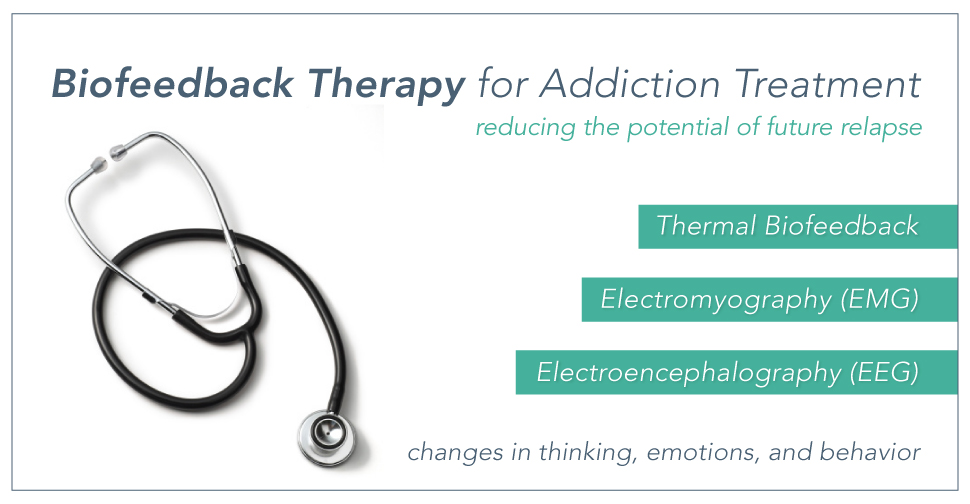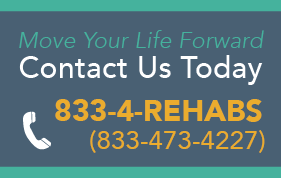
Each addiction is unique because every person contends with a set of circumstances and a background that is unique to them and their life. For this reason, addiction treatment must be specifically tailored to fit a person and the demands of their life, while addressing their physical, mental, and emotional needs.
Today, there exists a wide variety of treatments that can help a person within their drug or alcohol rehabilitation. Biofeedback therapy is an alternative treatment that has shown significant promise within addiction treatment as a tool to help a person work towards recovery and lasting sobriety, while also reducing the potential of future relapse.
What Is Biofeedback Therapy?
The Association for Applied Psychophysiology and Biofeedback Inc. defines biofeedback as “a process that enables an individual to learn how to change physiological activity for the purposes of improving health and performance…The presentation of this information — often in conjunction with changes in thinking, emotions, and behavior — supports desired physiological changes. Over time, these changes can endure without continued use of an instrument.”
These physiological changes may include: changes in body temperature, perspiration, increased respiratory rates, increased blood pressure, increased heart rate, or muscle tension. All of these changes occur involuntarily.
Biofeedback therapy is a tool that helps a person to learn how to control responses to their environment and stress by monitoring and understanding the effects that it has on their body and brain. Biofeedback occurs when a person is connected to technology that can monitor these aspects and relay the information or “feedback” promptly, by way of an audio or visual cue, such as a tone, light, or image.
Biofeedback is unique because with guidance from the treatment administrator, a person can gain a significant measure of control over the stresses that cause these involuntary reactions and begin to actually control them.
The Most Common Method Used Within Addiction Treatment
According to the University of Maryland Medical Center, the three most commonly used forms of biofeedback therapy are:
- Electromyography (EMG), which measures muscle tension
- Thermal biofeedback, which measures skin temperature
- Neurofeedback or electroencephalography (EEG), which measures brain wave activity
The later form, which is also called neurotherapy, is the one used most predominantly in the realm of addiction treatment. During the course of these sessions, a person has electrodes attached to their scalp which are hooked up to a electroencephalograph that monitors and reports on the person’s brainwaves.
The biofeedback therapist assists you in monitoring and understanding the changes depicted by the biofeedback machine. These changes are conveyed through different pitches of tones that correspond to your brainwaves.
As you work through relaxation exercises, the tone will change as your mental state reacts. By gauging these tones, your therapist will help you to become mindful of these changes and associate their causes and effects in a way that directs your focus and mental activities on bringing about the desired results.
Research shows that biofeedback holds success for those that struggle with PTSD, anxiety, depression, and ADHD, all disorders that may exacerbate, or contribute to a substance use disorder. Anytime you have a concurrent illness or disorder, it is imperative that you inform any and every individual that is involved in your addiction treatment of its presence and history. In order to fully succeed in your recovery and sobriety, you need to treat any underlying problems, including these or any other comorbid conditions.
Research Supports This Therapy
A paper published in the American Journal of Drug and Alcohol Abuse chronicled a study that followed 121 individuals that abused various substances. Of these individuals, 94% reported using more than one substance.
All participants were enrolled in an inpatient treatment program and received counseling and therapy based on the Minnesota Model (otherwise known as the abstinence method). The experimental group of participants received 40-50 EEG biofeedback sessions, while the control group received ongoing treatment that compared to the duration of time for the biofeedback sessions.
The study reported that “of the experimental subjects completing the protocol, 77% were abstinent at 12 months, compared to 44% for the controls.” In addition, they also found that the participants who received the biofeedback had a greater treatment retention, averaging 136 days in treatment, whereas the control population lasted 98 days. The study’s authors concluded that “this protocol appears to be beneficial for both sedative as well as stimulant substances of abuse.”
How Does It Work?
This treatment is non-invasive and has no side effects, making it a good treatment option for those that have had negative experiences or adverse reactions to other treatments. Under proper medical supervision, this can be a viable treatment option for pregnant women that are struggling with an addiction.
Despite the documented success within this field of treatment, researchers admit that they are still in the process of learning exactly how it works. One element does appear again and again—stress—a factor that is one of the predominant causes of substance abuse and addiction.
Stress exerts a vast toll on your body and mind. One of the biggest reasons a person misuses and abuses a substance is to self-medicate in response to the stress of their life. Certain stresses or triggers can prompt a person to use drugs or alcohol and, as this use continues and develops into a pattern, it can snowball into an addiction.
What Methods Does A Biofeedback Therapist Use To Help You Control Your Responses?
During biofeedback, a person has the opportunity to directly witness the effects of the stress and anxiety as the biofeedback device reports changes in real time. Under supervision and guidance from a professional, a person is instructed in various exercises that encourage relaxation.
The Mayo Clinic cites the following relaxation techniques that can be used during biofeedback therapy:
- Deep breathing
- Progressive muscle relaxation – alternately tightening and then relaxing different muscle groups
- Guided imagery – concentrating on a specific image (such as the color and texture of an orange) to focus your mind and make you feel more relaxed
- Mindfulness meditation – focusing your thoughts and letting go of negative emotions
From this, a person can see what methods best alleviate or alter these readings. By learning how to moderate these stress-inducing stimuli, a person can also gain greater control over the triggers that might precipitate their drug or alcohol use. If a person is properly instructed and treated with biofeedback, they can continue to control and alleviate these reactions even after they are no longer receiving the treatments.
People also report an increased sense of confidence as they learned about the connection between their mind and body and how to maintain control over it. This can be important, as addiction often makes people feel powerless over their own life. Research shows that a state of relaxation and calm follows these sessions, a period of time that is theorized to be prime for counseling and therapy to impart the greatest benefit.
Though in certain cases this therapy is successful on its own, research suggests it may work better paired with counseling, cognitive therapy, 12-step programs, and the support of certain medications that are deemed medically appropriate for your addiction and situation by your medical team.
Don’t Let Addiction Rule Your Life
 If you or someone you love is struggling with an addiction and you need help, please contact us at Drugrehab.org and let us aid you in finding the treatment that is best for you. Our trained and compassionate staff is standing by to answer any questions you might have, while providing you with the best and most current information to help you make the right decision.
If you or someone you love is struggling with an addiction and you need help, please contact us at Drugrehab.org and let us aid you in finding the treatment that is best for you. Our trained and compassionate staff is standing by to answer any questions you might have, while providing you with the best and most current information to help you make the right decision.

